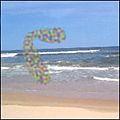Aura (symptom) facts for kids
An aura is the changes that people see, hear, smell, taste, or feel before they have an epileptic seizure, or before they have a migraine. It comes from the Greek word for breeze. The cause of the aura is related to the way the brain works, so this is a neurological condition.
Migraines
There are different kinds of migraines. About 15% of people who have a migraine will have an aura. The symptoms may include visual problems like not being able to see for a short time, seeing zig-zag lines or floating spots, dizziness, a ringing noise in the ears (tinnitus), and problems speaking. It may take up to an hour after the aura begins before a person starts getting a migraine.
Epileptic seizures
Many people with epilepsy have an aura before having a seizure. This can be helpful, because the aura can tell the person that a seizure is coming ahead of time, and give them time to get to a safe place. The time between the aura and the seizure is usually short (often from seconds to minutes).
Other causes
There are other neurological conditions which can cause aura-like symptoms. These include strokes and panic attacks, for example.
Symptoms

- Difficulty speaking
- Vertigo: a kind of dizziness where the person feels as if the world is spinning or moving around them or there is a feeling of spinning or moving in their head.
- Scotomas: blind spots in the person's vision
- Scintillating scotomas, also called teichopsia: seeing bright wavy lines or a spot with flickering lights, which gets bigger and grows into one or more arcs or curves of shimmering white light or colored flickering lights.
- Fortification: seeing zig-zag lines
- Changes in vision
- Photopsia: flashes of light
- Tinnitus: a ringing noise in the ears
- Muscle weakness
- Bilateral facial pain: pain in both the left and right side of the face
- Tingling feelings
- Numbness: usually following the tingling sensation there is numbness (you can not feel very much or not at all) one side of the body. This can happen in the arm, leg, and/or one side
- Muscle weakness: usually on one side of the body
- Alice in Wonderland Syndrome: these are a type of hallucination (something a person sees that is not real). These types of hallucinations may make other people or things look much smaller than they really are (micropsia) or bigger than they really are (macropsia)
Scotomas
Scotoma (came from the Greek word for darkness: skotos): a blind spot or area of reduced vision surrounded by a normal visual field. i.e.: A person can see normally except where the scotoma is. Scotomas may affect one or both eyes. They can be either absolute, where the person can see nothing within the scotoma, or relative, where the person can see something within the scotoma, but less than usual.
- Negative scotoma: an area of partial or total blindness. Usually it is followed by a scintillating scotoma, but the negative scotoma may be surrounded by a scintillating scotoma. A negative scotoma may be either be an absolute scotoma and may seem like a blank spot where the person can not see any light, or a relative scotoma in which some light may be seen but less than normal, the scotoma may be blurry as if looking through thick plastic. Negative scotomas are usually not noticed by a person and are found by an eye or ophthalmic examination.
- Positive scotoma: an area of vision loss or blockage that may be seen as a dark or black spot or the blockage of vision may be what seem to be various shapes or lines that may change in brightness i.e they may get darker and lighter so it seems like a flickering light.
-
- Fortification scotoma (AKA:teichopsia): seeing lines that look like the lines of a fort. The lines may be gray or colored and the brightness may change from darker to lighter so that they appear to be flickering then the fortification scotoma may be called a scintillating scotoma.
-
- Scintillating scotoma: is the progression of a fortification scotoma i.e When the lines seen in a fortificatin scotoma change in brightness rapidly so they look like flickering lights. This is one of the most common scotomas a person who has a migraine with aura may see. It usually starts as a spot of flickering lights in the center of a person's visual field it then gets larger.
Images for kids
-
Flickering animation of a scintillating scotoma, where the scintillations were of a zigzag pattern starting in the center of vision, surrounded by a somewhat larger scotoma area with distortion of shapes but otherwise melting into the background similarly to the physiological blind spot.
See also
 In Spanish: Aura (síntoma) para niños
In Spanish: Aura (síntoma) para niños










